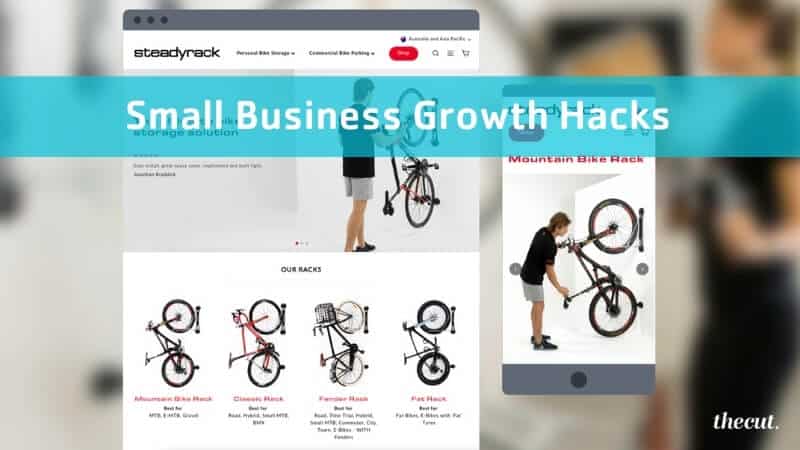Ecommerce in a pandemic
Think about this for a moment. In 2020, the size of the eCommerce sector doubled in 3 months.
That’s big.
In North America, in the first 3 months of the global pandemic, eCommerce went from 15% to 28% of total retail sales. In Australia and New Zealand, and most of the rest of the world, the growth was almost identical.
That growth came because new people started shopping online for the first time, and online shoppers started buying more products online. Like toilet paper, for example.
Plus, businesses large and small had to pivot to find new ways to stay afloat and stay alive. Many of those pivots meant moving their sales and services online, often for the first time.
Now, in 2021, there are 1.7+ million businesses operating active online stores on the Shopify platform.
There has never been a better or more exciting time to open an online business, or to add online sales to a traditional, bricks and mortar business.
What is Shopify?
Shopify is a hosted software platform designed and launched in 2004 specifically to give businesses everywhere access to eCommerce technologies and opportunities. It allows anyone (yes, you too!) to open an account and launch an online store.
It really can be that simple, and many entrepreneurs do exactly that and build very successful businesses, operating online only. It’s an amazing sector and the success stories are everywhere.
The awesome thing about Shopify is that it’s flexible and scalable and that makes it fantastic for the smallest, start-up, side hustle business to the biggest retail brands, like JB Hi-Fi.
There are no magic bullets, and like any business, eCommerce requires hard work and dedication. But there is no doubt that Shopify, and similar platforms, have opened up all sorts of opportunities for business-minded people all around the world.
And now, in 2021 the Shopify ecosystem of agencies, app developers, consultants and eComm entrepreneurs is huge, helpful and always friendly and happy to talk and share insights.
Starting Step 1 – Product Niche
‘There are riches in the niches.’
If you say this with an American accent, it’s more effective, but either way, the message is clear. You don’t need a huge product catalogue to make it big in eCommerce. In fact, often, the opposite is true.
The first step you should take is to find, or refine, your product niche. That means finding your specialised product, or a small selection of products that will be the focus of your online store and brand.
To give you an example, one of the first Shopify brands we worked with specialised in loose leaf tea and they had only two flavours and a couple of different size options. That’s it. And they were doing some very, very impressive monthly sales figures that grew and grew and grew, while their product selection remained the same.
Whatever product, area, need, service or problem solver you choose to niche into, do it. It works, and it keeps many things far simpler for you to develop and manage in your business.
Starting Step 2 – Your Customers
When you have your products and niche, it is very important that you stop and think about your customers. They are the most important people in your eCommerce world.
At The Cut, we have a podcast and for that podcast we interview eCommerce people. In over 70 episodes, when we ask those people what the single most important eComm factors are in any business, they have all replied with one of these two answers:
- Understanding your customers.
- Building your brand.
You must understand your ideal customers and why they will want to engage with your brand and buy your products. We recommend building a profile of your perfect customer. Give them a name, and then build out that profile based on their gender, age, location, family, profession, needs, wants, challenges and motivations.
When you have that perfect person, your ideal customer, the next step is to build your brand so that it is attractive and relevant to them.
Starting Step 3 – Your Brand
When we say ‘Brand’ at The Cut, we don’t mean the logo. Well, we do mean the logo, but it is a single factor amongst many that build your brand.
Of course, the logo is important, but even more important in eCommerce is having a brand that engages with the person (people) who are most likely to become your customers.
That means using text and language that they will relate to. Show them what you offer and why it is awesome, and how you can help them.
Use images that help them see the benefits and the awesome emotions they will experience when they have your product in their lives.
When you are designing your logo, choosing your brand colours and photography, and writing the text for your online store, make sure they are right and relevant for the person you have profiled as your ideal customer.
About The Cut
The Cut is a digital-first agency, founded in 2009. They are Shopify Expert partners and the only Shopify Plus partner agency in Western Australia. Shopify Plus is the enterprise level of the platform. It’s the same platform, with a bunch of extra technical features designed to help bigger companies and fast growth eComm brands.
At The Cut, they specialise in eCommerce development and digital branding to help businesses stand out, engage and convert. They’ve worked with Shopify since 2010 and their focus is on helping businesses sell more online with design, development, features, integrations and operational solutions.
They’re here to help business owners to learn, understand the Shopify eCommerce ecosystem, and then implement the most effective strategies that help them evolve and grow.
Want to grow your business?
Whether you need help with integrating your business systems or reviewing your business plan and structure now that you’ve launched your eCommerce store, our financial experts are ready to help you and your business. Get in touch with us to get started.
See more from our Small Business Growth Hacks series
Small Business Growth Hacks: The secrets of employee engagement
HR Dept Director, Pia Engstrom reveals the secrets to employee engagement and what you can do to ensure your team is productive both in the office and from home.
Small Business Growth Hacks: Make smart energy decisions to save your business money
Carbon client and CEO of Solar Suite, Paul Foster, explains how smart energy decisions can save you money and achieve new growth opportunities.
Growth Hacks: Investments for
children
Setting our kids up for the future is one of the biggest concerns most parents have. Futurity Investment Group dive into how you can make your child’s investment future a priority.
Small Business Growth Hacks: Create a unique brand experience using automation
Businesses are constantly looking for new ways to grow. Huddle Up Creative, explains how to create a unique brand experience using marketing automation.





















